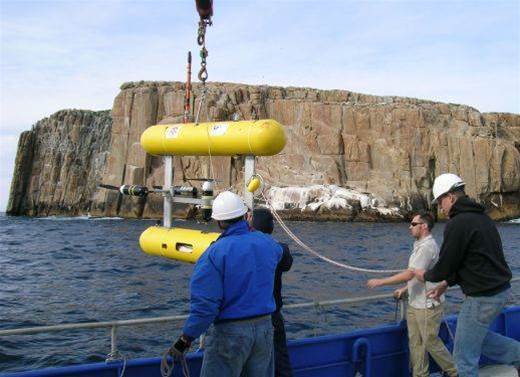Autonomous underwater vehicles (AUV) have been successfully used to monitor changes in marine parks off the coast of Tasmania, providing better insights to inform future management than human diving teams.

The autonomous drones were equipped with multibeam sonar to map the sea floor around the Bicheno region including the Governor Island Marine Reserve, two-and-a-half hours north of Hobart.
The study by the University of Tasmania’s Institute for Marine and Antarctic Studies (IMAS) covered areas of rocky reef in the region, where invasive long-spined sea urchins have been increasing in density in recent years, lead researcher Dr Nick Perkins said.
“With the AUV, we could collect high-resolution imagery of the sea floor to depths greater than 30 metres, which are not typically sampled by methods such as scuba diving,” he said in a statement.
“GPS locations for each image are also collected which can then be matched to multibeam maps.
“This allowed us to track the changes to rocky reef ecosystems through time, gave us valuable insights into changes in biological communities across a wide range of depths and allowed us to match barrens' occurrence to different levels of reef complexity.”
Barrens occur where urchin populations have exploded, resulting in destructive grazing of kelp forests.
The study, published in the scientific journal PLoS ONE, indicated that the absence of fishing in the Govern Island Marine Reserve over the past 30 years has helped the region develop stronger resilience to barren formation.
“In 2016, barrens inside the reserve covered less than one percent of the rocky reef surveyed, while sites outside the reserve had from three to 10 percent barrens cover in that year,” Perkins said.
“This may be because southern rock lobster, the urchin’s main predator, exist in higher densities and at larger average sizes where fishing is excluded, which results in increased urchin predation.”
However, while areas of the marine reserve may be more resistant to the initial establishment of the barrens, the study suggests there was no difference in the rate of barrens growth once they begin forming.
“The overall barren cover doubled over the five-year survey period regardless of whether areas were protected or not, which raises serious concerns around the likely longer-term trajectory of barren formation, especially as previous IMAS research shows that, once established, recovery of barrens habitat is problematic," Perkins said.
Insights from the study can be combined with the detailed 3D maps generated by multibeam sonar surveys to produce further insights on how the complexity of the underwater terrain further impacts barrens development.
“We found that using multibeam seafloor mapping in the study areas enabled us to map out the spatial variation in reef depth and surface roughness, and to use this to more accurately predict where urchin barrens are more likely to form," Perkins said.
“It’s technology that could be used over large sections of coastline to contribute to urchin management approaches currently being undertaken by the Tasmanian Government, such as informing where commercial urchin harvesting may be best targeted to help control the expansion of barrens.”


























